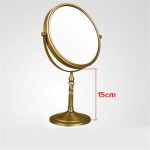How To Do Screen Mirroring On A Non-Smart TV
Screen mirroring, the ability to wirelessly display the content of a smartphone, tablet, or computer screen onto a television, has become increasingly popular. While smart TVs have built-in functionalities for this, many households still utilize non-smart TVs. This article will explore various methods to achieve screen mirroring on a non-smart TV.
One common approach involves using HDMI cables. While not technically "mirroring" in the wireless sense, an HDMI connection offers a stable, high-quality wired connection. Users simply need an HDMI cable and an adapter suitable for their device. For example, smartphones and tablets might require a USB-C to HDMI or Lightning to HDMI adapter. One end of the HDMI cable connects to the adapter attached to the device, and the other end connects to an available HDMI port on the television. Once connected, the TV's input source should be switched to the corresponding HDMI port. This method offers a reliable, lag-free experience, especially beneficial for activities like gaming or watching high-definition videos.
Wireless adapters offer a true screen mirroring experience for non-smart TVs. These devices, often powered by HDMI, create a Wi-Fi network that allows devices to connect and mirror their displays. Several popular options are available, including Chromecast, Roku Streaming Stick, and Amazon Fire TV Stick. Users typically plug the wireless adapter into an available HDMI port on the TV and then follow the device-specific setup instructions, usually involving connecting to the adapter's Wi-Fi network through a smartphone, tablet, or computer. Once configured, users can initiate screen mirroring from their device's settings. The specific steps may vary slightly depending on the operating system (Android, iOS, Windows, macOS) and the chosen wireless adapter.
Another method utilizes Miracast technology. Miracast facilitates direct wireless connections between devices for screen mirroring. Many newer laptops and Android devices have built-in Miracast support. To utilize Miracast, the non-smart TV needs a compatible Miracast dongle or receiver plugged into an HDMI port. Once the receiver is connected, users can activate Miracast mode on their device and select the receiver to initiate the mirroring process. The TV input source should be switched to the corresponding HDMI port. Miracast offers a relatively straightforward setup and a stable connection, however, device compatibility should be confirmed before attempting this method.
DLNA, or Digital Living Network Alliance, provides another approach for sharing media content on a non-smart TV. This technology doesn't technically mirror the entire device screen but allows streaming of media files like photos, videos, and music. A DLNA-compatible device, such as a media server software on a computer or a DLNA-enabled app on a smartphone, is required. The non-smart TV needs to be connected to the same network as the DLNA device. Some Blu-ray players and game consoles also offer DLNA support and can act as a bridge between the DLNA server and the TV. Users can navigate and select media files on the DLNA device, and these files will be streamed and played on the TV. While not true screen mirroring, DLNA is a viable option for sharing media content stored on a different device.
Gaming consoles often provide screen mirroring functionalities. Popular consoles like Xbox and PlayStation allow users to connect their smartphones or tablets to the console and then use the console's connection to the TV to display the mirrored content. The specific process varies depending on the console and the device being mirrored. Consult the console's user manual for detailed instructions. This method often requires specific apps or settings configurations on both the gaming console and the mirroring device.
Using a laptop and connecting it to a non-smart TV via an HDMI cable remains a reliable solution for screen mirroring. As mentioned previously, this wired method provides a stable and high-quality connection. Once connected, users can configure their laptop's display settings to duplicate or extend their screen to the TV. This method effectively mirrors the laptop's display onto the TV, providing a simple and effective solution, especially for presentations or watching content from a laptop on a larger screen.
Choosing the appropriate method for screen mirroring depends on individual requirements and available equipment. Factors to consider include the desired level of wireless functionality, the types of devices involved, budget constraints, and technical expertise. HDMI cables provide a straightforward wired option. Wireless adapters offer flexibility and convenience. Miracast provides a direct wireless connection for compatible devices. DLNA is suitable for sharing media files. Gaming consoles can also be utilized for mirroring. Careful consideration of these factors will guide users towards the most appropriate method for mirroring their screen content onto a non-smart TV.

How To Connect Phone Non Smart Tv Without Hdmi

How To Screen Mirror Iphone A Non Smart Tv

How To Mirror Phone On Non Smart Tv Chromecast Screen Mirroring Hindi
How To Connect A Non Smart Tv With My Smartphone Quora
How To Connect A Non Smart Tv With My Smartphone Quora

How To Make Any Non Smart Tv Into W Internet Apps

How To Stream And S A Non Smart Tv Using Dlna Resource Centre By Reliance Digital

How To Make Any Non Smart Tv Into W Internet Apps

How To Mirror Iphone Tv Without Apple

How To Mirror Phone On Non Smart Tv Chromecast Screen Mirroring Hindi








